Post-Cloning SSD Integration: Key Steps and Insights
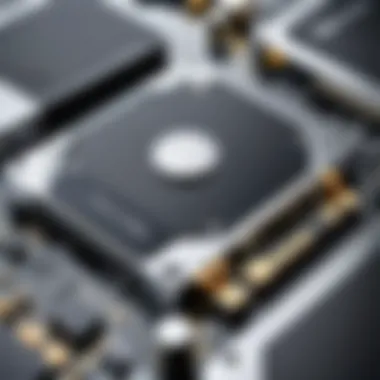
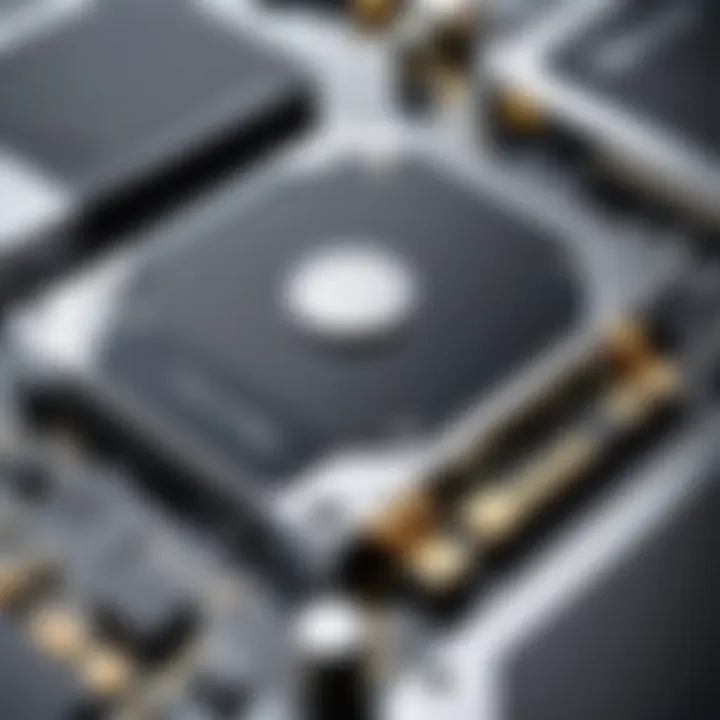
Intro
Transitioning from a traditional hard disk drive (HDD) to a solid-state drive (SSD) is no small feat. This shift is often fueled by the quest for improved performance and reliability. Cloning your data to an SSD is just the beginning; the real challenge lies in ensuring that your new device operates at peak efficiency. An understanding of the distinct characteristics of SSDs compared to HDDs is fundamental. In this guide, we will peel back the layers of post-cloning SSD integration, addressing key steps, potential pitfalls, and optimization strategies for users ranging from IT professionals to tech enthusiasts.
This isn't merely a discussion about shiny new devices—it's about the fundamental boost in speed and efficiency that SSDs can provide. With the right approach, integrating an SSD into your system can revive even the oldest machines, making them feel fresh and nippy again.
Overview of Hardware/Software
Prelude to SSDs and their key features
Solid-state drives have come a long way since their inception. Unlike HDDs, which rely on moving parts and magnetic disks to store data, SSDs utilize flash memory to provide faster data access, lower latency, and significantly reduced downtime. Their speed can make a world of difference for users dealing with large files or demanding applications.
Specifications and technical details
When selecting an SSD for your setup, it's crucial to know their specs. Most SSDs come in different interfaces such as SATA, NVMe, and PCIe. For instance:
- SATA SSDs are generally slower, topping out at around 600 MB/s.
- NVMe SSDs, on the other hand, can reach speeds of over 3,000 MB/s.
Before making a purchase, it's essential to weigh your needs against these speeds and specifications. Buyers should pay attention not only to read and write speeds but also to endurance ratings, usually measured in terabytes written (TBW).
Pricing and availability
SSD prices have notably decreased over the years, making it easier to upgrade without breaking the bank. However, premium models with high capacities or enhanced durability often come with a steeper price tag. Always keep an eye on sales and discounts offered by manufacturers or retailers.
Comparison to previous versions/models
The transition from older models to newer SSDs has been marked by significant improvements in stability, capacity, and speed. While the early adopters faced risks such as shorter lifespan and compatibility issues, modern SSDs are both robust and user-friendly. This evolution has often left many wondering if upgrades are truly necessary—or how massive the difference can be.
Pros and Cons
Strengths
- Speed: SSDs can dramatically reduce boot times, load times for applications, and file transfer times.
- Durability: With no moving parts, SSDs are less prone to physical failures.
- Energy Efficiency: They consume less power, which can be a boon for portable devices.
Weaknesses
- Cost: Although prices are lower than before, SSDs still tend to cost more per gigabyte compared to HDDs.
- Lifespan Limitations: Flash memory has a finite number of write and erase cycles, although this is improving.
User feedback often paints a positive picture. Many users praise the instant start-up times and snappy performance upgrades, but some express concerns over price and capacity.
Performance and User Experience
Performance Testing Results
In comprehensive studies, SSDs frequently outshine their HDD counterparts in various scenarios. Mild workloads may not show a stark difference, but intensive applications, such as video editing or gaming, reveal the stark disparities in performance metrics.
User interface and ease of use
Most SSDs integrate seamlessly into existing systems. However, factors such as driver installation and system compatibility may require some technical know-how. It's often advisable to consult the manufacturer's documentation if you’re unsure.
Real-world usage scenarios
Upgrading a gaming rig? You’ll notice quicker loading screens. Working on data-heavy analytics projects? SSDs can handle multiple inputs without stalls. Whatever your use case, the boost in speed and performance is often readily apparent.
Efficiency and productivity impact
In longitudinal studies, users switching to SSDs report a marked improvement in work efficiency and overall satisfaction. Higher responsiveness translates into less waiting time, enabling users to focus more on their tasks.
Innovation and Trends
Industry trends related to SSDs
The SSD landscape continues to evolve, with new technologies like 3D NAND and PCIe 4.0 making their mark. These advancements aim to push speed and efficiency boundaries, challenging traditional perceptions of what storage can achieve.
Innovative features
Newer SSDs offer features such as thermal throttle protections, encryption, and even DRAM-less designs that cater to budget builds without sacrificing too much end performance.
Potential impact on the IT industry
As SSDs become the norm rather than the exception, businesses are rethinking their data storage strategies, focusing on high-speed solutions that drive productivity and efficiency.
Recommendations and Epilogue
Overall verdict and recommendations
For those on the fence about an SSD upgrade—do it. The performance benefits are tangible and well worth the investment. Pay close attention to those specifications and select a model that fits your needs.
Target audience suitability
This guide is primarily suited for IT professionals and tech-savvy individuals. However, even novices can find value, provided they take time to understand the fundamentals discussed herein.
Final thoughts and future prospects
Moving forward, one can anticipate further integration of SSDs in the consumer market. As prices continue to drop and performance improves, solid-state drives are bound to become a staple in tech upgrades. As they say, don't wait for the rain to stop; learn to dance in it—especially when technology is blooming all around you.
Prolusion to Cloning
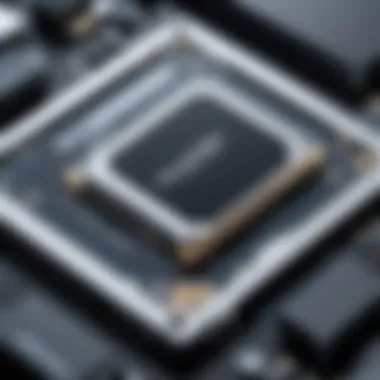

Cloning, the process of creating an exact copy of data from one storage device to another, is pivotal in the modern tech landscape. As more users upgrade their systems from traditional hard disk drives (HDDs) to solid-state drives (SSDs), understanding cloning becomes essential. Transitioning to SSDs not only enhances system speed but also improves reliability and longevity of data storage.
In the context of this article, we will explore crucial elements of cloning, benefits associated with the process, and important considerations to keep in mind while undertaking this task. It’s not just about duplicating data; it’s about setting the stage for a smoother tech experience for both IT professionals and tech enthusiasts alike. Hence, familiarity with the cloning process can save time, streamline operations, and prevent data loss.
Understanding the Cloning Process
To grasp the cloning process, it's important to break it down into simplified parts. Cloning typically involves the migration of your entire operating system, applications, and data onto a new storage device. Think of it as a digital photocopy of your old drive. It captures every byte of information and transfers it to the SSD without loss. There are two main methods to achieve this: sector-by-sector clones and file-by-file clones.
- Sector-by-Sector Cloning: This method replicates every sector of the HDD, whether it's in use or not. While thorough, this can result in unnecessary data transfer if the drive holds unwanted or temporary data.
- File-by-File Cloning: Unlike the previous method, this focuses only on actively used files, minimizing transfer time and storage needs on the new SSD.
Once the cloning process is complete, the SSD should be ready to perform efficiently. However, some configurations may still be necessary to optimize its performance after the switch.
Why Clone to SSD?
There are numerous compelling reasons to opt for an SSD over traditional HDDs, especially when considering a clone operation. For starters, speed is the name of the game. SSDs are significantly faster than HDDs, allowing for quicker boot times and reduced application loading times. When you clone your system to an SSD, users often experience notable improvements in everyday tasks.
Another benefit is durability. Unlike HDDs, which contain moving parts, SSDs are more resilient to physical shocks and are less prone to mechanical failure. This translates to a longer lifespan for your storage solution.
Moreover, SSDs use less power, contributing to energy efficiency and potentially longer battery life in laptops.
There’s also the importance of space and cooling. SSDs are generally smaller and generate less heat, which can aid in cooling overall system performance.
"Cloning to an SSD isn’t just about transferring data; it’s about embracing an upgrade that paves the way for better performance and efficiency."
In summary, cloning to an SSD isn’t merely a technical step; it’s an enhancement journey. Understanding the nuances of this process will prepare you to maximize the benefits that modern storage solutions offer.
Hardware Considerations
Transitioning to a solid-state drive (SSD) post-cloning is not merely a plug-and-play operation; it involves a careful evaluation of hardware compatibility and the selection process for the most suitable SSD. Understanding these aspects is paramount for ensuring that the new SSD functions efficiently and meets the user’s needs. Without this consideration, one might run into unwanted complications that could undermine the intended benefits of faster performance and greater reliability that SSDs typically bring to the table.
Compatibility of SSD with Existing Hardware
When choosing to upgrade to an SSD, it’s crucial to check if the chosen SSD is compatible with the existing hardware. There are several factors at play here: the motherboard, interface types, and storage protocols. Most notably, older motherboards may not support the newer SATA standards or NVMe interfaces, leading to potential bottlenecks in performance.
In practical terms, this means that deciding to switch to an SSD demands some due diligence. One should inspect the motherboard specifications carefully, and consider reaching out to the manufacturer for confirmation. Upgrading to newer hardware could facilitate the full benefits of SSD technology, so keeping an open mind about potential hardware investments might just save one from a performance headache down the line.
"A mismatch in SSD and motherboard technology can be akin to running a marathon in flip-flops; you're just not equipped for the task."
Selecting the Right SSD
Choosing the right SSD might feel daunting with the plethora of choices available today. It's not just about picking one off the shelf; understanding various aspects can enhance the overall experience considerably. Three principal components come into play during the selection process: capacity considerations, performance metrics, and form factor options.
Capacity considerations
A significant aspect when selecting an SSD relates to its capacity. Most users find themselves weighing their storage needs against what’s on offer, and rightly so.
One key characteristic of SSD capacity is its direct link to how much data can be stored. With the decreasing costs of storage, many opt for higher capacities, making this choice both beneficial and increasingly popular.
However, while larger capacities provide ample space, they often carry a higher price point. A unique feature of capacity considerations is the understanding that just because a larger drive is available, it doesn’t always translate to actual needs.
In this article, it’s essential to assess how much data—be it applications, media, or other files—will truly reside on the SSD. Finding a balance between need and budget is often the key to making this decision satisfactorily.
Performance metrics
The performance metrics of an SSD are critical, as they dictate the speed and efficiency of data retrieval. High-performance SSDs can result in noticeable improvements, such as reduced loading times and faster file transfer speeds.
The characteristic to keep in mind here is the sequential and random read/write speeds, which have become a benchmark for SSD performance. Users often gravitate towards SSDs with high performance ratings for everything from gaming to heavy data processing tasks.
Nevertheless, while performance metrics are crucial, it's important to assess whether or not the higher speeds translate into improvements relevant to the specific tasks one plans to carry out.
Form factor options
The form factor of an SSD refers to its physical size and layout. Options like the 2.5-inch SATA SSDs, M.2 drives, or PCIe can influence not only compatibility with existing hardware but also performance.
A significant characteristic of form factor options is their versatility. Some SSDs slot easily into existing setups, but others may require specific mounting or enclosures. Their unique feature lies in the potential for varying speeds; for instance, NVMe M.2 drives typically offer superior speed in comparison to traditional SATA SSDs.
Balancing the physical space within a system case against hardware needs is vital when selecting an SSD. Rushing into this choice might backfire later, leading to unexpected performance limitations or fitting challenges.
In summation, the hardware considerations present a valuable roadmap for the seamless integration of SSDs into existing setups. By taking the time to understand compatibility, selecting the right capacity, performance metrics, and form factors, users can enhance their overall computing experience while leveraging the best SSDs available.
Post-Cloning Procedures
Bringing a solid-state drive into your tech world isn’t just about the transfer of data; it’s also about ensuring that what follows after cloning runs smoothly. This stage determines how well the SSD will communicate and function with your existing system. Adopting proper procedures post-cloning not only mitigates potential pitfalls but also maximizes the benefits you’re looking for in an SSD, such as increased speed and reliability.
Initial Boot and Configuration
BIOS settings adjustment
The BIOS, or Basic Input/Output System, acts as the backbone for your computer during the booting process. Adjusting BIOS settings after cloning an SSD is instrumental in allowing your new drive to be recognized. This process isn’t merely beneficial; it’s crucial for syncing the hard drive with the system's hardware.
One key characteristic of the BIOS adjustment is its role in selecting the boot drive. To ensure your computer boots from the SSD instead of the old HDD, you might need to tweak the boot order within the BIOS settings. This adjustment is a common choice for users transitioning to SSDs as a means of streamlining operations. However, failing to make these adjustments could leave you staring at a stubborn black screen. Often, this can feel like a brick wall.
The standout advantage of making these changes is the immediate acknowledgment of your SSD by your system, paving the way for a robust performance. However, there could be a downside if these settings are not familiar to you, as incorrect adjustments can result in system instability or failure to boot entirely.
Operating system recognition
Operating system recognition is yet another pivotal phase in the post-cloning journey. For the system to run efficiently, the OS needs to identify the SSD. This is where drivers come into play. An OS may sometimes struggle to recognize the new SSD due to outdated drivers, and that’s where the nitty-gritty of driver updates gets in. It’s a popular choice among tech enthusiasts because the prospect of improved performance rests heavily on having the latest drivers.
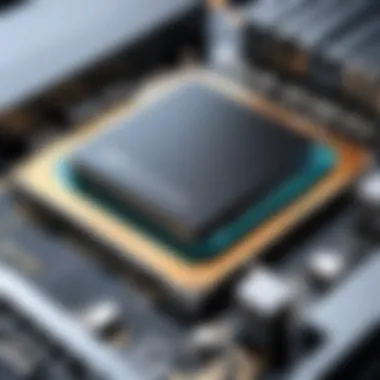
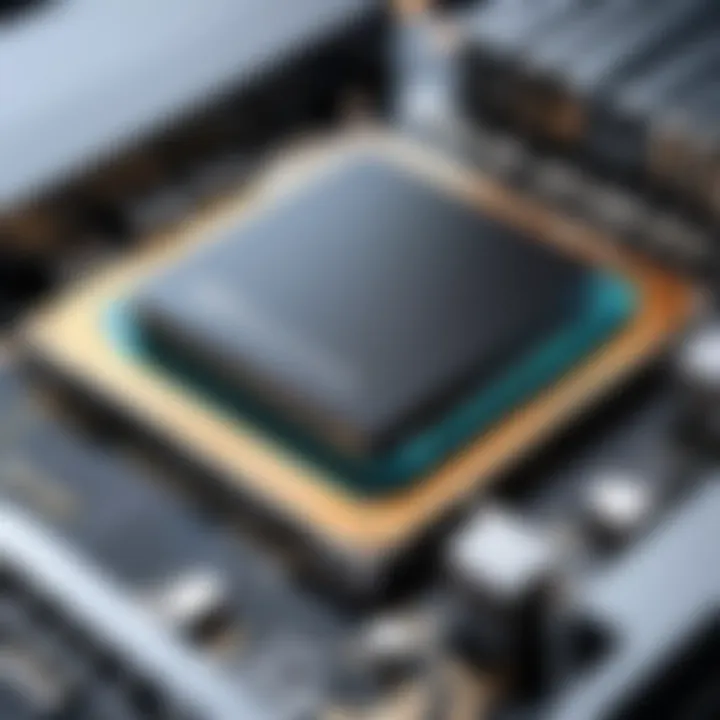
A unique feature here is that both Windows and macOS usually handle this quite well on their own nowadays, automatically identifying the new drive and installing corresponding drivers. But there are exceptions. If the SSD isn’t recognized after all is said and done, the user may need to dive into device manager settings or run some manual updates.
From one angle, this ensures that the SSD is working with optimal compatibility, leading to better performance and longevity. On the flip side, if mishaps occur during this process, the operating system could report errors, creating hurdles to the seamless operation intended.
Data Verification
Once you've navigated the initial setup, validating data on the SSD is paramount. This process aims to confirm that everything was cloned properly and that the files are intact. Data verification can save you a world of trouble, making sure that when you need to access important files, they are just a click away without any hitches. This step involves checking file integrity, ensuring that no files were corrupted during cloning. Tools like Check Disk or third-party software can assist here, providing a straightforward route to verify your data’s health.
Troubleshooting Common Issues
Boot errors
Boot errors can feel like a punch to the gut after you've just made a substantial upgrade. These issues often stem from incorrect BIOS settings or improper configurations during the cloning process. When the computer struggles to find a bootable device, you’ll undoubtedly be left with more questions than solutions.
A key trait of boot errors is their unpredictability; they can crop up suddenly and disrupt the user experience. The good news is that these issues are often easily resolvable with a bit of patience and methodical troubleshooting, such as double-checking BIOS settings or reconnecting cables.
The downside, of course, is the potential for data loss if overlooked or mishandled. Prioritizing backups before engaging in the cloning journey is vital in preventing catastrophic data loss when dealing with boot errors.
Disk not recognized
When the SSD won’t show up on your system at all, it can be a huge headache. Whether it's instantly following installation or after a reboot, a non-recognized disk can be disheartening. This scenario is often a direct result of hardware issues or not formatting the drive properly before cloning.
The primary factor to consider here is ensuring that all connections are snug and secure. Sometimes, it’s just a cable that’s come loose. Additionally, formatting the SSD before the cloning process can ensure smoother recognition.
Positively, should the drive be recognized after these checks, it often performs beautifully without issues for a long time. Or, if no recognition occurs after all avenues are explored, reaching out to a tech-savvy friend or a professional could provide the answer.
“A seamless SSD integration hinges heavily on overcoming common hurdles post-cloning.”
In summary, navigating post-cloning procedures is one of the pillars of successful SSD integration. A little attention-to-detail can go a long way in ensuring that your transition from HDD to SSD isn’t just a switch, but rather a transformed experience, one where speed and efficiency multiply.
Optimizing SSD Performance
When transitioning from a traditional hard drive to a solid-state drive, optimizing performance becomes not just an afterthought but a necessity. It's a bit like tuning a fine instrument; if you don't have it properly set up, you're not going to get the best sound possible. SSDs can offer lightning-fast speeds, but without the right configuration and maintenance, those advantages might just go down the drain.
In a world where efficiency is everything, optimizing your SSD is akin to giving your system a breath of fresh air. It ensures that you’re not just running, but sprinting right from the start. Key elements to consider include adjusting the operating system settings and utilizing management software. Let's take a more detailed look at these facets.
Configuring the Operating System
To make the most out of an SSD, one often needs to configure the operating system to leverage its advanced capabilities.
Enabling TRIM support
One vital aspect of configuring your SSD is enabling TRIM support. Think of TRIM as a preemptive cleaning service for your drive. It helps the SSD manage space more efficiently, letting it know which data blocks are no longer in use. Why should you consider TRIM? For starters, it significantly enhances the SSD's longevity by preventing unnecessary write cycles. Being an automatic process, TRIM more or less takes some weight off your shoulders.
The key characteristic of TRIM is that it operates quietly in the background. You won’t have to fuss with it, yet its impacts can be notable. In terms of favorable characteristics, TRIM makes SSDs faster over time, as it reduces the time needed to prepare storage for new data. However, it’s important to note that not every operating system automatically supports TRIM. If you’re running on something older, enabling it can be quite a finicky task.
Advantages of TRIM:
- Enhanced performance over time
- Increased drive longevity
- Automated management of deleted data
Disadvantages of TRIM:
- Not natively supported by all operating systems
- May require manual tweaking in some setups
Adjusting virtual memory settings
Adjusting virtual memory settings is another crucial step. This essentially lets you set aside some SSD space for system memory overflow, which can be handy if your physical RAM is limited. The significance here lies in how well your machine can run tasks without stuttering.
By tweaking your virtual memory settings, you can often see improvements in overall system responsiveness. Think of it as allocating some extra room in your digital workshop; when you have more space, you can get the job done more efficiently.
A key characteristic in this context is flexibility; by setting your virtual memory to a higher limit, the operating system can swap data more readily. However, be careful not to go overboard. Too much reliance on virtual memory can lead to a slower experience since SSDs, while great, can still be slower than physical RAM.
Advantages of adjusting virtual memory:
- Improved multitasking capabilities
- Better performance in data-heavy applications
Disadvantages of adjusting virtual memory:
- Can lead to slower speeds if overused
- Requires manual intervention for optimal settings
Utilizing SSD Management Software
Once your operating system settings are dialed in, utilizing SSD management software becomes your next line of attack in optimization.
Monitoring health
Monitoring the health of your SSD helps you catch potential issues before they become problems. It's like going for regular check-ups; it can save you a lot of hassle down the line. Specialized software can give you insights into how your SSD is performing through metrics like write endurance and temperature.
Having such oversight is essential for any long-term owner of an SSD, as an ounce of prevention is worth a pound of cure. The key characteristic here is proactiveness; by staying informed, you can initiate corrective actions before failure occurs.
Advantages of monitoring health:
- Early detection of performance issues
- Extended lifespan of the SSD
Disadvantages of monitoring health:
- Requires time and understanding to interpret data
- May not catch every issue
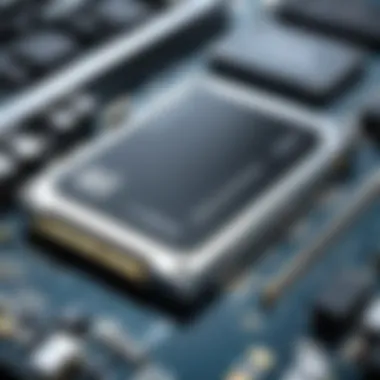
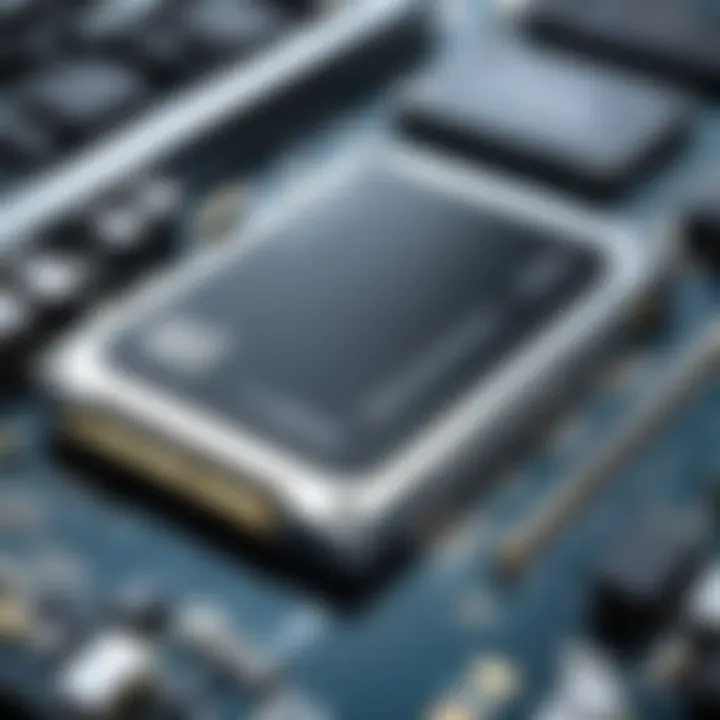
Managing storage
Lastly, managing storage effectively ensures that your SSD retains its speed and efficiency over time. This involves routinely cleaning up unnecessary files, unscheduling large backups during critical usage times, and keeping an eye on how space is allocated.
The unique feature of effective storage management focuses on optimal space utilization, which helps prevent performance degradation over time. It’s like organizing a cluttered workspace; stuff finds its way to the top when things are in order.
Advantages of managing storage:
- Improved speed and responsiveness
- Reduces wear-and-tear on the SSD
Disadvantages of managing storage:
- Requires sustained effort and oversight
- Potentially time-consuming if large data is involved
Ultimately, optimizing an SSD for peak performance necessitates an integrated approach: configuring the operating system correctly and utilizing management software effectively. Ignore these steps, and you're likely to miss out on the full power of your solid-state drive.
Maintenance Best Practices
Integrating a solid-state drive into your system post-cloning isn't just about the initial setup; it's about ensuring performance longevity and reliability. Maintenance best practices serve as a blueprint for keeping your SSD functioning optimally. Neglecting these practices can lead to performance degradation over time, false disk errors, and even data loss. In this section, we’ll explore vital practices that every user should adopt in their SSD journey.
Regular Backups
When it comes to digital data, it's always better safe than sorry. Regular backups are crucial for safeguarding your valuable files against unexpected mishaps like drive failure or accidental deletions. Performing periodic backups doesn’t only protect the data; it also provides peace of mind.
- Automated Backup Solutions: Consider employing software that automatically backs up your data on a schedule. Tools like Acronis or EaseUS offer convenient options to schedule backups.
- Cloud vs Local Storage: Weigh the benefits of cloud storage against local solutions. Cloud options provide accessibility from anywhere but can come with subscription costs, while local options require physical space but often grant you immediate access.
- Incremental Backups: Only back up changes made since the last backup instead of the entire system every time. This method consumes less space and reduced time.
"Data isn't just numbers; it's your digital life. Protect it like you would any valuable treasure."
Firmware Updates
Keeping your SSD's firmware updated is often overlooked but quite essential. Firmware acts as the brain for your SSD, dictating how it functions and communicates with your system. Outdated firmware can lead to bugs, security vulnerabilities, and suboptimal performance.
- Benefits of Updating:
- How to Update: Manufacturers like Samsung and Crucial typically provide user-friendly tools or instructions on how to update firmware. Be sure to check their official websites for the latest versions, which can often be downloaded with just a couple of clicks.
- Follow the Schedule: Set reminders every six months to check for firmware updates. Treat it like your seasonal maintenance routine for your car, ensuring everything’s running smoothly.
- Improved performance metrics, often notably in speed and efficiency.
- Bug fixes that may prevent issues like unexpected shutdowns.
- Enhanced security protocols to safeguard against emerging cyber threats.
Defragmentation Myths
A common misconception about SSDs is that they need defragmentation like traditional hard drives do. In fact, defragging an SSD can do more harm than good. Understanding this can save users unnecessary stress and possibly prevent data wear.
- Why It’s Different: SSDs use flash memory, which allows for faster data access. Unlike HDDs, they don’t have moving parts that require data to be physically rearranged. Fragmentation doesn’t slow down SSDs the way it does with hard drives.
- TRIM Command: Instead of defragmentation, modern operating systems automatically use the TRIM command to help manage unused data blocks on the SSD. This ensures that writing speed remains high.
- Conclusion: Don’t fall into the trap of unnecessary manual defragmentation. Instead, focus on ensuring TRIM support is enabled on your OS.
In summary, adhering to the maintenance best practices outlined here will ensure your SSD remains a reliable and efficient part of your system. Regular backups, firmware updates, and a solid grasp of defragmentation principles can enhance the lifespan of your SSD and keep it performing at peak efficiency.
Future-Proofing Your SSD System
When it comes to integrating solid-state drives into your system, thinking ahead can save you a world of headaches down the line. Future-proofing your SSD setup isn’t just a luxury—it's a necessity in our fast-paced tech landscape. As technology continues to evolve, anticipating your needs can enhance not only the longevity of your SSD but also your overall system performance.
Planning for Capacity Growth
As the amount of data we generate continues to spiral upward, planning for capacity growth becomes crucial. When choosing an SSD, consider how much storage you currently need and project for future requirements. It is wise to opt for an SSD that accommodates potential upgrades.
- Think Bigger: Choosing an SSD with a higher capacity than you currently need can prevent the dreaded scramble for more space later. Storage needs often expand with larger files, cloud applications, and more demanding software.
- Cloud Compatibility: Consider how your SSD will work with cloud services. An integration that allows for seamless data management between your local storage and the cloud can reduce the strain on your local SSD and extend its life.
- Balance Performance with Size: Performance may decrease when storage devices approach maximum capacity. It’s crucial to maintain a good balance to ensure your SSD doesn’t slow down as you fill it up.
Emerging Technology Trends
Keeping an eye on emerging trends can guide you in making decisions that ensure your SSD systems are robust for years to come. The SSD landscape is shifting rapidly, with new advancements reshaping capabilities and performance.
NVMe Overview
NVMe, or Non-Volatile Memory Express, stands out as a game changer for SSDs. With its ability to take advantage of faster data transfer speeds, NVMe drives are quickly gaining traction among tech-forward users.
- Fast as Lightning: The primary characteristic of NVMe is its ability to deliver significantly faster data transfer rates than traditional SATA connections. This means quicker loading times and improved overall system responsiveness.
- Efficiency Wins: What sets NVMe apart is its unique architecture that reduces latency. It keeps your applications running smoothly, and this efficiency is a notable advantage in data-intensive processes.However, keep in mind that NVMe drives might come with a higher price tag compared to older SATA models; thus, weighing the cost against performance potential is essential.
Potential of PCIe 5.
Emerging on the scene is PCIe 5.0, which is poised to push performance boundaries even further. This technology promises double the bandwidth of its predecessor, PCIe 4.0, laying the groundwork for a future filled with possibilities.
- Massively Scalable: PCIe 5.0’s ability to handle increased data rates positions it as an excellent choice for applications requiring rapid data access, such as high-performance gaming or data centers.
- Improving Efficiency: The unique feature of PCIe 5.0 is its capacity to support multiple high-speed devices without choking bandwidth. For high-end users, it allows keeping pace with the heaviest workloads without breaking a sweat.
But you may want to approach PCIe 5.0 with some caution. While the technology is dazzling, it isn’t necessary for everyone right now. Assess your current needs and whether your existing hardware can leverage this cutting-edge technology.
In summary, embracing future-proofing for your SSD system isn’t merely about what’s hot on the market. Working through capacity planning and being aware of emerging trends will put you in the driver’s seat as tech advances at full steam ahead.
"In considering future-proofing, one must weigh both immediate needs against anticipated trends. It’s a balance that shapes not only performance but the user experience over time."
Keeping a finger on these pulses will ensure your system remains relevant and efficient long after those initial cloning jitters fade.
End
As technology barrels forward, the transition from hard disk drives to solid-state drives has become a hallmark of modern computing. The importance of this topic cannot be overstated; it represents not just an upgrade but a fundamental shift in how we approach storage solutions. An SSD isn't merely a faster alternative; it embodies improvements in reliability, energy efficiency, and overall performance. Here, we assess the significance of this transition and the myriad benefits that accompany it.
Reflections on the Transition Journey
Reflecting on the journey from HDDs to SSDs, one can't help but marvel at how this evolution reshapes user experiences. Users switching to SSDs frequently report a profound transformation. The device boots up in a flash, applications launch at lightning speed, and file transfers happen in a blink. This is not just surface-level change but a paradigm shift in how tasks are accomplished.
However, the journey isn’t devoid of challenges. Grasping the intricacies of cloning, understanding the hardware and software interplay, all while ensuring optimal settings require a degree of diligence. Those who have navigated this landscape often find that a deeper comprehension leads to fewer hiccups and a more seamless experience. They can better anticipate potential bottlenecks and mitigate them effectively, creating a smoother transition overall.
Looking Ahead in Storage Technologies
The future of storage technologies promises even more exciting advancements. As we stand on the brink of new innovations such as NVMe and PCIe 5.0, the horizons expand further. NVMe, for instance, represents a major leap forward in data transfer rates, offering remarkable throughput and reduced latency, effectively unleashing the true potential of SSDs. On the other hand, PCIe 5.0 heralds a world where bandwidth becomes less of a bottleneck, paving the way for increasingly demanding applications.
As we look ahead, it’s crucial to stay informed about emerging trends that will continue to reshape storage dynamics. Users and professionals alike must remain vigilant, ready to adapt to new technologies as they arise. The landscape will not just evolve; it will revolutionize the way we store, manage, and access data. As such, being prepared to integrate new technologies will be imperative for anyone looking to stay at the forefront of this transitioning field.
Ultimately, embracing these changes signifies more than just adopting new hardware; it reflects an understanding of the continuous evolution of technology itself. Every upgrade comes with its own set of challenges and benefits, and being informed allows for more calculated decisions and a better overall experience in the realm of storage solutions.



